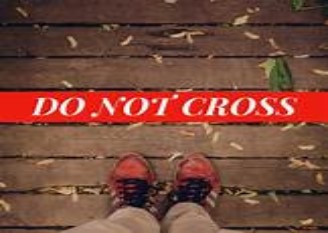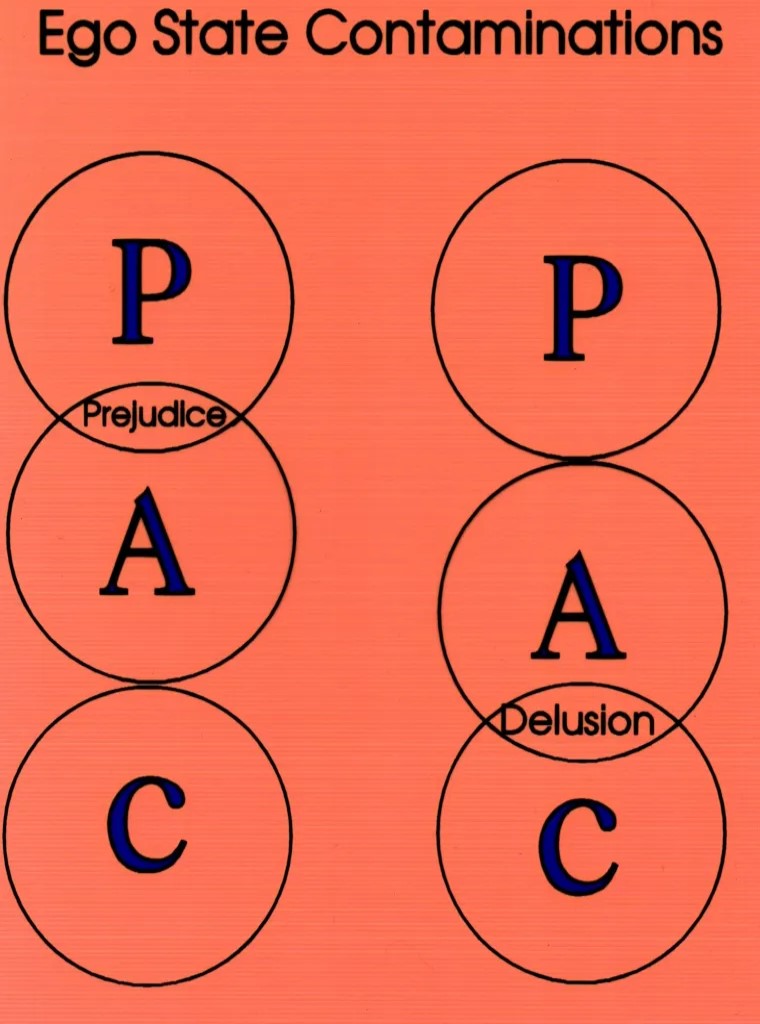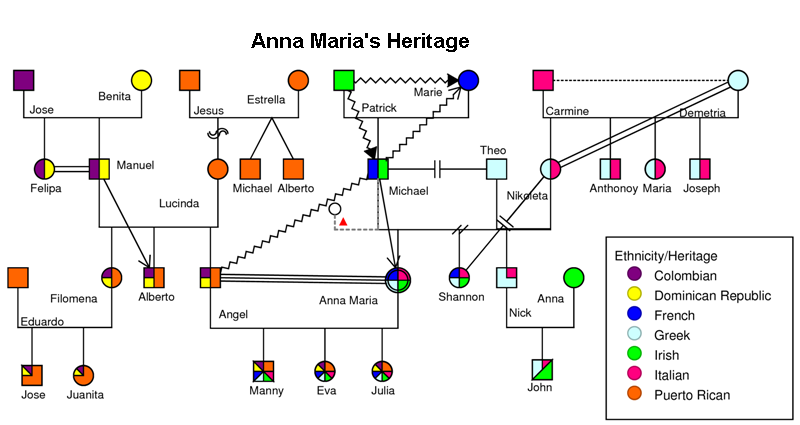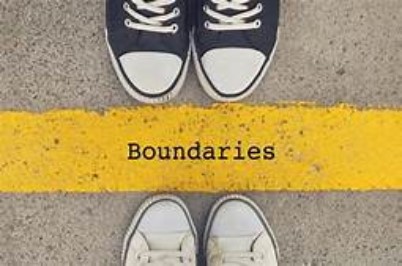When small, safe experiments are being designed, it can help to be aware of the notion of ‘boundaries’. Therapy often pays attention to ‘healthy boundaries’ in relationships.
So what’s your idea of ‘healthy’?
Is it?

Or?

….. or, what?
Boundaries appear to be important in families and relationships. The material on attachment and early years trauma suggests that things can go wrong when parents struggle to be parents and children struggle to be children.
Boundaries that go wrong
The sad truth is that the bond between a parent and child can be overwhelming; Transactional Analysis (TA) refers to this as an over-occluded relationship. There is an illustration of this at:
…. where this illustration, below, can be found. It demonstrates the TA view of how boundaries within ourselves start to overlap and create problems such as ‘prejudice and ‘delusion’ as follows:

Prejudice arises when our present Adult Ego State is troubled by Parent messages about what ‘should’ be. Delusion arises when that Adult Ego State is troubled by the dreams and fantasies bubbling up from our Child Ego State.
For example, where sexual abuse arises between parent and child, there is grossly excessive ‘occlusion’. The growing child struggles to find a place for the grown up she calls ‘father’ or ‘mother’.
One individual fails to demonstrate where they stand in relation to the other. As children are not able to make judgements, and take responsibility for such actions, then the adult has to hold the line and act responsibly to protect the child. That’s the rule most communities live by.
Instead, where there is excessive closeness, even without the extremes of criminal behaviour, relationships between parent and child can be confused and negative. Again, the parent(s) are required to take notice of this and to act differently.
Describing boundaries
How do I describe boundaries here? The material on ecograms can help. When drawing a family diagram, the aim is not to produce a photograph; instead, what is wanted is a map that shows emotional bonds and the strength of those bonds. Some will be positive, others negative and many a mixture of both.
For information, there is a useful YouTube video on the topic of making ecograms at:
Note the way of designating a relationship that is strained by separation, divorce and even death. You can develop your own style of drawing, say, with dashed lines to indicate strained relationships and making ‘distant’ relationship more afar on the paper.
Wikipedia suggests you place yourself at the centre of the page. Immediate family can be placed in the centre of the circle with suitable family connections drawn. Beyond that, you can draw connections to and from the people that play a role in your life; say, at work, in the neighbourhood or in the wider family. These connections can be connected by lines that are:
- Thicker (darker) lines mean stronger relationship.
- Curvy, dashed or red lines mean that the system is a stressful relationship.
- Arrows pointing to the you, from other people, where the other person is an important ‘influence’ in your life.
- Arrows pointing to other people, from you. This means you are a primary influence on them. An obvious example, here, would be parent-to-child.
- Arrows pointing both direction depicts a two-directional flow of influence as may apply in a healthy marriage.
In an Ecogram these relationships can look like:

You’ll find that therapists are attentive to these boundaries, as drawn or as described by their clients. It can help to consider how these relationships, and the boundaries within which they operate, can change over time.
Pam Levin has some useful things to say about that.
From my point of view, the ‘picture’ identifies where small, safe experiments might be focused, e.g. on the way I communicate with my daughter, or in making decisions after a death or separation within the family. For instance, look at “Michael” in Anna Maria’s heritage map. What is the likely impact on Anna Maria, and several other people, should “Michael” die?
Bear in mind that negative relationships foster negative thoughts and this perpetuates our disturbances. We do not often brush off our negative thoughts with a sigh of relief.
Boundaries exist at several levels – not just in families or small groups
Up to now (2020), I’ve said little on this topic; this is odd, as it is such an important feature when change is in the air. On reflection – perhaps not so odd. I am writing in ‘lockdown’; at a time when our government has decided on setting some tight boundaries for its citizens – so much so that they call it ‘social distancing’ when, what is really needed is physical distancing! Even then, the boundaries are loosened, then tightened and loosened once again all by legislation! How’s that for a recipe for unpredicability arise in your family, and what is the result of it, today.
Much therapy is about managing disrupted relationships – can they be repaired, adapted and/or accepted? Very few individuals are going to live long in this world without a disrupted relationship. Therefore, the issue is not if this work has to be done – but when it will be needed. Models of change show how boundaries can shift over time. Our safe experiments need to take account of the ‘inertia’ that sits at the heart of those models of change. Nudges can help us manage that inertia and move us along that scenic route.
True, many people work through these disruptions without professional support, but the opportunity for something to go awry increases as the years go along. An example of the process that can arise when relationships are seriously disrupted can be found at:
Space and Time changes after death and separation
